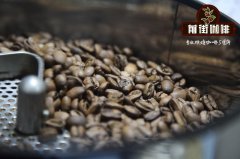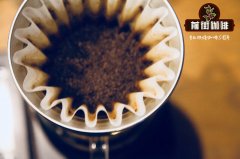Sumatran Coffee production area G1Coffee beans in Gayo Mountains _ Sumatran Coffee Wet planing process

Professional coffee knowledge exchange more coffee bean information please follow the coffee workshop (Wechat official account cafe_style)
G1 TP, GAYO Mountains, Sumatra, Indonesia
Indonesia Sumatra GAYO Mountain G1 TP
Product Information:
Producing area
Sumatran Coffee GAYO Mountains G1 TP
Harvest time
January-March, October-December
Grade division
G1
Variety
Heirloom Varietals
Planting height
1100 m-1300 m
Processing mode
Classic wet plane
Retail packaging specifications
1kg/ bag, 5kg/ bag
Flavor characteristics
Lemon Vanilla (lemon vanilla), Milk Chocolate (chocolate milk), Red Apple (red apple), Spices (spice), Body (mellow thickness)
Sumatran Coffee GAYO
The topography of Sumatra Island is long and narrow. The topography of Sumatra Island is mainly from northwest to southeast of the island's Barisan Mountains Mountains and eastern lowlands. The mountain range, with more than 90 volcanoes and many volcanic lakes, provides fertile soil for coffee to grow.
Among them, the well-known coffee growing areas are mainly concentrated in the northern mountains, including the northernmost provinces of Aceh and North Sumatra (Sumatera Utara). Including the well-known Mandheling, Lintong and Gayo Mountain.
Gayo mountain coffee comes from the mountains around Takengon and Lake Tawar in Aceh province. Aceh coffee is mainly produced in the Gayo Mountain mountains around Lake Lake Tawar, and most of the farmers in this area are local Gayo People aborigines, while coffee in Jiangsu Province is mainly produced in the world's largest super crater lake-Lake Toba and Lintong in the south, and the local farmers are mostly Batak People aborigines.
Wet planing treatment (Semiwashed Wet Hulled)
This is the hallmark of Indonesian coffee processing, and locals call it Giling Basah. Given by the natural environment, the local humid, hot and rainy climate has created a mellow, complex and charming Indonesian coffee. The common method of washing and sunbathing is to wait until the coffee bean is dehydrated and hardened and the moisture content is between 12% and 13% before grinding off the shell. On the other hand, due to the humid climate in Sumatra, local farmers invented the wet planing method, which is when the coffee beans are not yet dehydrated and the moisture content is as high as 30%, the shell of the coffee fruit is scraped off and then continued to dry, which can greatly shorten the drying time.
1. Every year, March-May and September-December is the picking season for Indonesian coffee. Farmers pick red ripe fruit and gather them in the workshop for processing.
two。 The initial processing detaches the peel and pulp of the ripe fruit, leaving the seeds with a sheepskin. While reducing the weight of coffee, it also avoids the mildew caused by the rapid decay of the pulp for the first time.
3. Fermented coffee farmers pour seeds with sheepskin into a fermentation tank and use mountain spring water to rinse and ferment. The fermentation time ranges from 12 hours to 36 hours.
4. To dry seeds with sheepskin on the ground or on a drying rack. Dry the water content of coffee seeds with sheepskin to about 40%.
5. The difference between the shelling drying wet planing method and other treatment methods is that the seeds with sheepskin with a moisture content of about 40% are uniformly sent to the shelling factory for shelling and drying, and the moisture content is about 15%.
END
Important Notice :
前街咖啡 FrontStreet Coffee has moved to new addredd:
FrontStreet Coffee Address: 315,Donghua East Road,GuangZhou
Tel:020 38364473
- Prev

What are the varieties of Sumatran coffee beans? The difference between Sumatran Coffee longberry and Rasuna
Professional coffee knowledge exchange more coffee bean information please follow the coffee workshop (Wechat official account cafe_style) basic information 1 Aceh-Manning country: Indonesia: Aceh Province,Sumatra Manor: small farmers planting (organic) treatment: wet planing varieties: Tim-Tim janyung Ateng Typica Rasuna altitude: 850-1500m baking
- Next

Sumatran Honey treated Mantenin Coffee Bean Flavor description what is the meaning of TP?
Professional coffee knowledge exchange more coffee bean information please follow the coffee workshop (Wechat official account cafe_style) 1 TP Indonesian Sumatran coffee farmers are not smart, even some single-minded. It is well known that the varieties of Sumatran coffee are very complex and chaotic, and the varieties are not of high grade. And Sumatran coffee farmers, including the local coffee association until
Related
- Does Rose Summer choose Blue, Green or Red? Detailed explanation of Rose Summer Coffee plots and Classification in Panamanian Jade Manor
- What is the difference between the origin, producing area, processing plant, cooperative and manor of coffee beans?
- How fine does the espresso powder fit? how to grind the espresso?
- Sca coffee roasting degree color card coffee roasting degree 8 roasting color values what do you mean?
- The practice of lattes: how to make lattes at home
- Introduction to Indonesian Fine Coffee beans-- Java Coffee producing area of Indonesian Arabica Coffee
- How much will the flavor of light and medium roasted rose summer be expressed? What baking level is rose summer suitable for?
- Introduction to the characteristics of washing, sun-drying or wet-planing coffee commonly used in Mantenin, Indonesia
- Price characteristics of Arabica Coffee Bean Starbucks introduction to Manning Coffee Bean Taste producing area Variety Manor
- What is the authentic Yega flavor? What are the flavor characteristics of the really excellent Yejasuffi coffee beans?

